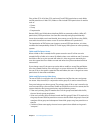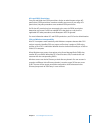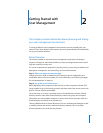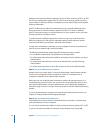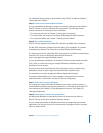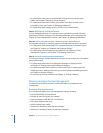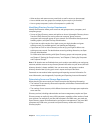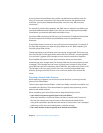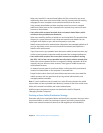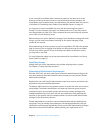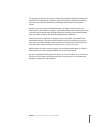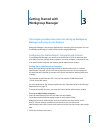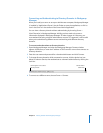
36 Chapter 2 Getting Started with User Management
If you use network home folders, they require one dedicated home folder server for
every 150 concurrent connections. If you use mobile accounts with portable home
directories, you need one dedicated home folder server for every 300 concurrent
connections.
For example, if you have 400 computers and 2000 users on network home folders, you
need three dedicated home folders servers. If those users are deployed with portable
home folders, you need two dedicated home folder servers.
If you have 1800 computers and 2500 users, you should have 12 dedicated home folder
servers for network home folders and 6 dedicated servers for portable home
directories.
Group folders require one server for every 450 concurrent connections. For example, if
you have 400 computers, you need one group folder server. For 1800 computers, you
need four group folder servers.
Storage requirements vary because users have varying storage needs. Some users may
store very few files in their home folders, while other users fill theirs. A simple guideline
is to start with 1 gigabyte (GB) of storage per user account, but allow for expansion.
Don’t establish disk quotas or other space restrictions unless you have closely
examined your users' storage needs. For example, 2000 user accounts might only need
2 terabytes (TB) of storage over the course of several years. However, if you give that
same 2000 users their own computers with 60 GB drives, they could use as much as 120
TB of storage. In this case, every user fills his or her own drive, and portable home
directory syncing mirrors files from his or her local home folder to the network file
server.
Choosing a Home Folder Structure
When deploying computers, one of the most crucial decisions is choosing how and
where to host home folders.
There are three types of home folders: a local home folder, a network home folder, and
a portable home directory. These home folders are typically tied, respectively, to local,
network, and mobile accounts.
When considering your home folder structure, keep the following in mind:
 Users with local accounts typically have local home folders.
When users save files in local home folders, the files are stored locally. To save the
files over the network, users must connect to the network and upload the file.
Using local home folders provides the least amount of control over a user’s managed
preferences, and is also not inherently tied to a network account.
 Users with network accounts typically have network home folders.



